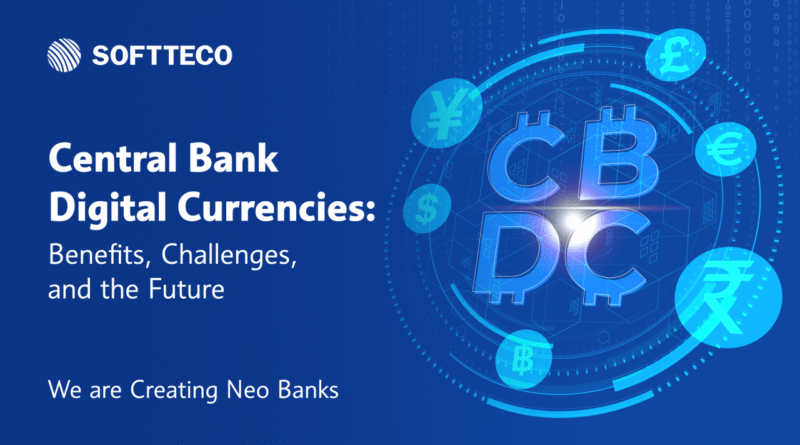The Future of Digital Currency (CBDC)
Introduction
Money has always changed with time. From gold coins to paper notes and now to digital wallets, the way people use money keeps evolving. The next big step in this journey is the Central Bank Digital Currency (CBDC) — a new type of money created by central banks that exists only in digital form.
Many countries are testing or already launching their own CBDCs, and experts believe this could transform how we save, spend, and send money. But what exactly is a CBDC, and what does its future look like? Let’s understand in very simple words.
What is a CBDC?
A Central Bank Digital Currency (CBDC) is digital money issued by a country’s central bank, like the Federal Reserve (USA), Reserve Bank of India, or the European Central Bank.
Unlike cryptocurrencies such as Bitcoin, a CBDC is not decentralized — it’s fully controlled by the government. It’s just like cash, but in digital form.
You can think of it as official government-backed e-money that you can store in your phone instead of your wallet.
Example
If you have ₹500 in your CBDC wallet, it is equal to ₹500 in cash. The only difference is that it exists in a digital wallet or app, not as a paper note.
Why Are Governments Creating CBDCs?
There are several reasons why countries are interested in launching CBDCs:
1. Faster and Cheaper Transactions
Digital money moves quickly — no waiting for bank hours or cross-border delays. CBDCs can make payments almost instant and low-cost for everyone.
2. Financial Inclusion
In many developing countries, millions of people don’t have bank accounts. With CBDCs, people can use a simple mobile app to store and send money — no bank needed.
3. Fight Against Corruption and Crime
Because every CBDC transaction can be tracked, it helps reduce illegal money transfers, tax evasion, and fraud.
4. Modernizing the Financial System
As the world goes digital, central banks want to keep up with private innovations like cryptocurrencies and fintech apps. CBDCs give governments a modern way to manage national money.
5. Cross-Border Efficiency
Sending money between countries is still slow and expensive. CBDCs can make international payments faster, transparent, and cheaper.
How Does a CBDC Work?
CBDCs are managed using secure digital systems run by the central bank.
Here’s a simple process:
-
The central bank issues digital currency (CBDC).
-
Commercial banks or authorized apps distribute it to people and businesses.
-
People use CBDC to pay bills, shop online, or transfer money instantly.
It works just like digital cash but with no middleman — the money goes directly from one person to another through official platforms.
Two Main Types of CBDCs
-
Retail CBDC: Used by the general public (individuals and businesses) for daily transactions. Example – buying groceries, paying rent, etc.
-
Wholesale CBDC: Used by banks and large institutions for big money transfers between them.
Difference Between CBDC and Cryptocurrency
| Feature | CBDC | Cryptocurrency |
|---|---|---|
| Control | Issued and managed by government | Decentralized (no single owner) |
| Stability | Value is stable, same as national currency | Price changes often |
| Legal Status | Legal tender (official money) | Not official in most countries |
| Purpose | Improve financial system | Alternative investment or payment system |
| Technology | Can use blockchain or other secure systems | Mostly blockchain-based |
In simple terms, CBDCs are safe and official digital versions of real money, while cryptocurrencies are private digital assets that change in value.
Countries Testing or Launching CBDCs
Many nations are moving forward with CBDCs at different speeds.
-
China: One of the leaders, already testing the Digital Yuan in many cities.
-
India: Launched the Digital Rupee (e₹) pilot program through the Reserve Bank of India.
-
Europe: The Digital Euro is being studied by the European Central Bank.
-
United States: The Federal Reserve is researching a digital dollar but hasn’t launched it yet.
-
Bahamas: One of the first to launch a national CBDC called the Sand Dollar.
These projects show that CBDCs are no longer just an idea — they are becoming a reality.
Benefits of CBDCs
1. Security and Trust
CBDCs are backed by the government, which means people can trust them more than private digital coins.
2. Instant Payments
You can send or receive money within seconds, even across borders, without using traditional banks.
3. No Physical Cash Needed
Digital money means no risk of losing your wallet or carrying cash.
4. Better Record-Keeping
Since every transaction is digital, it becomes easier to keep records and track spending.
5. Lower Transaction Costs
Digital transfers reduce bank fees, ATM charges, and paperwork.
6. Support During Crises
During emergencies (like pandemics), governments can send digital payments directly to citizens quickly.
Challenges and Risks of CBDCs
While CBDCs bring many advantages, there are also some challenges that need attention.
1. Privacy Concerns
Since CBDCs are traceable, people worry that the government could monitor every transaction. This raises privacy and data protection issues.
2. Cybersecurity Threats
Being digital means the system could face hacking or technical failures. Strong security is essential.
3. Impact on Banks
If people start using CBDC wallets instead of bank accounts, traditional banks could lose deposits, which might hurt their business.
4. Digital Divide
Not everyone has access to smartphones or the internet, especially in rural areas. This could leave some people behind.
5. International Coordination
If each country creates its own CBDC with different systems, it may be difficult to make global payments work smoothly.
The Future of CBDCs
The future of CBDCs looks bright but challenging. Most experts believe that within the next decade, digital currencies will become common in many countries.
1. CBDCs Will Work Alongside Cash
Physical money may not disappear soon. Instead, CBDCs will exist together with cash, offering people more choice.
2. Faster Global Payments
CBDCs could connect directly across borders, making international transfers as easy as sending a message.
3. Growth in Smart Payments
CBDCs can use smart contracts — automatic digital agreements — to make payments happen only when certain conditions are met.
4. Support for E-Governance
Governments may use CBDCs to deliver subsidies, pensions, or refunds directly into citizens’ digital wallets.
5. Safer Financial Systems
With better control and transparency, CBDCs can make financial systems more stable and secure against fraud.
Will CBDCs Replace Cash?
This is a common question. The short answer is no, not yet.
CBDCs are still in testing stages in most countries. While they make transactions faster, many people still prefer cash for privacy and simplicity. Governments are planning to run both systems together for the next several years.
Over time, as technology becomes safer and more people go digital, the use of physical money will slowly reduce — but not vanish completely.
How CBDCs Can Change Daily Life
Imagine a future where:
-
You get your salary instantly in a CBDC wallet.
-
You pay your rent, bills, and taxes through a government app.
-
You travel abroad and exchange money digitally in seconds.
-
You receive government benefits directly in your wallet without visiting a bank.
That’s the kind of convenience and efficiency CBDCs can bring to everyday life.
Conclusion
The world is moving toward a more digital future, and money is no exception. Central Bank Digital Currencies (CBDCs) could make payments faster, safer, and more inclusive.
However, with these benefits come new responsibilities — ensuring privacy, cybersecurity, and equal access for everyone.
In the coming years, CBDCs may redefine the global financial system. They will not just change how we pay but also how governments manage money and how economies connect with each other.
The future of CBDCs is not only about digital money — it’s about building a smart, transparent, and inclusive financial world for all.

